Imagine a Book: Binding Conference (Book Cover Structure)

After the main text is finalized, the “Invitation to Supplementary Text”, “Creative Copywriting” and—planning book design can be carried out at the same time. That is, thinking about how the book will be presented to readers, designing the book's "cover", "binding method", and "inner page layout", and using different touches and images to set off the content recorded in the book them.
It would be great if you could imagine what a book would look like at the same time as you read the manuscript. But adhering to the spirit of "doing one thing well at a time", sometimes it is also a way to calm down and think carefully, investigate, and study what style is best for presenting the manuscript at hand. Before designing a book, you must first understand the structure of a book and the various processes it may go through.
book structure
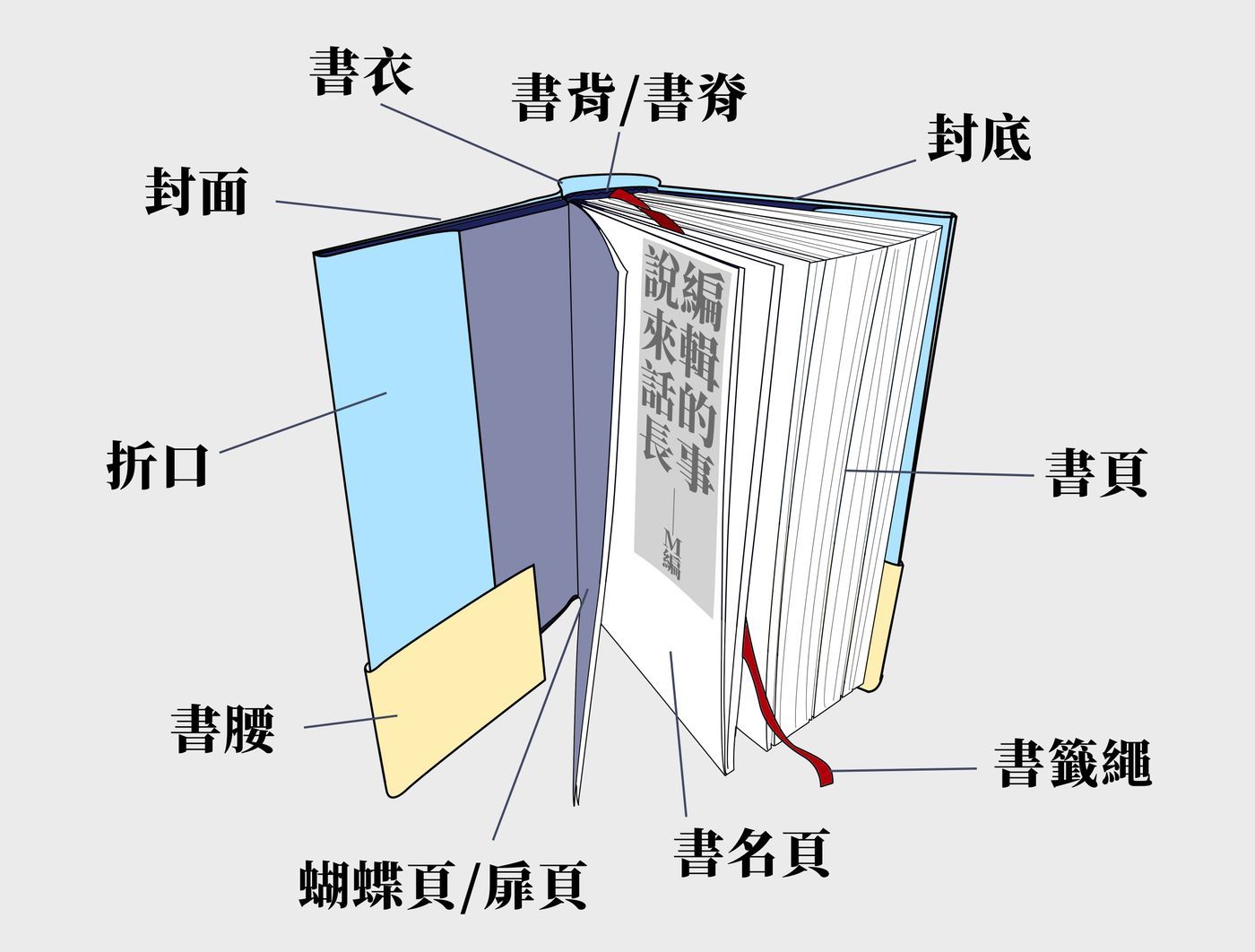
In the past, the types of books were mostly classified according to the binding method. From the point of view of texture and circulation, it can be roughly divided into "hardcover" and "paperback". What is hardcover naturally becomes the difference between it and the mass-released paperback. For example, Wang Xiaomiao's " Evil Innocent Heroin " is bound with thread, supplemented by flannel hardcover, and even more flammable candles are placed on the cover - "a collection of poems that exists to become ashes".

The limited release seems to be more attached to the taste of "hardcover". I think paperback/hardcover is a relative concept that depends on the publisher's (or author's) strategy and definition of publishing. But let's go back and see what different binding methods traditionally refer to when communicating with publishing houses and printing houses:
- Hardcover: Use the material to cover the cardboard larger than the pages as the book cover, and glue the inner pages through the butterfly pages to make a durable and beautiful book. Hardcover books are mostly used for classic works or catalogues, which are conducive to long-term preservation and highlight the value of nobility and content. Hardcover books are classified into: round backs, square backs, empty backs, soft hardcovers, and cloth hardcovers according to the materials, materials and methods of production.
- Paperback: Printed only on thicker paper than the inner pages and the same size as the inner pages. In order to issue more volumes and reduce prices, poorer paper will be used for printing; however, paperbacks are the mainstream in the book market today, and after the advancement of printing technology, paperbacks can be presented through different binding methods and post-processing . Durable, beautiful book.

- Glue binding: The most common binding method, with hot-melt glue on the back of the book to hold the text in place.
- Threading glue binding: The mainstream binding method of hardcover books, after threading the back side of the book with a thread, and then gluing to fix it.
- Book head cloth: The cloth strips glued to the upper and lower ends of the inside of the back of the book have both reinforcing and decorative functions. Usually, the color matching the cover is selected.
- Fluttering: When the book cover is larger than the inner pages, the excess part is the fluttering.
- Book groove: The groove pressed between the back of the book and the cover and back cover makes the hardcover book easier to read.

The biggest difference between hardcover and paperback is its sturdy, larger cover than the inside pages, and a more durable and easy-to-turn binding. Between hardcover and paperback, is the "softcover" popular in tomes, business management, and textbooks. The book cover is not covered with cardboard, but is directly printed on thicker copper cardboard. Made in a lightweight, yet more elegant form than a paperback. However, the supporting force of soft hardcover is poor, and the flap is easy to collide and deform, which is not necessarily favored by readers.
Back to the book construction itself, from the front of the book.

- Book jacket: Originally a "coat" to protect hardcover books, it has the functions of protection and dust prevention. Today it is widely used on paperbacks and hardcovers, and directly as the cover. Add a book jacket to a paperback to keep the cover from being disturbed by creases and to hide the back that gets damaged as the pages are turned.
- Inner cover: Under the book jacket, the cover that is really connected to the book. It is divided into a front cover and a back cover (often confused with the back of the book). In the case of a book jacket, it is usually only a simple design, which complements the cover of the book jacket.
- Book Back: The back of the book, the spine.
- Fold: The part of the book cover that is folded inward. Usually used to place book series or author information.
- Whole book cover: It refers to the whole covering the fold, front cover, back cover and book back, that is, the appearance of the entire book cover.
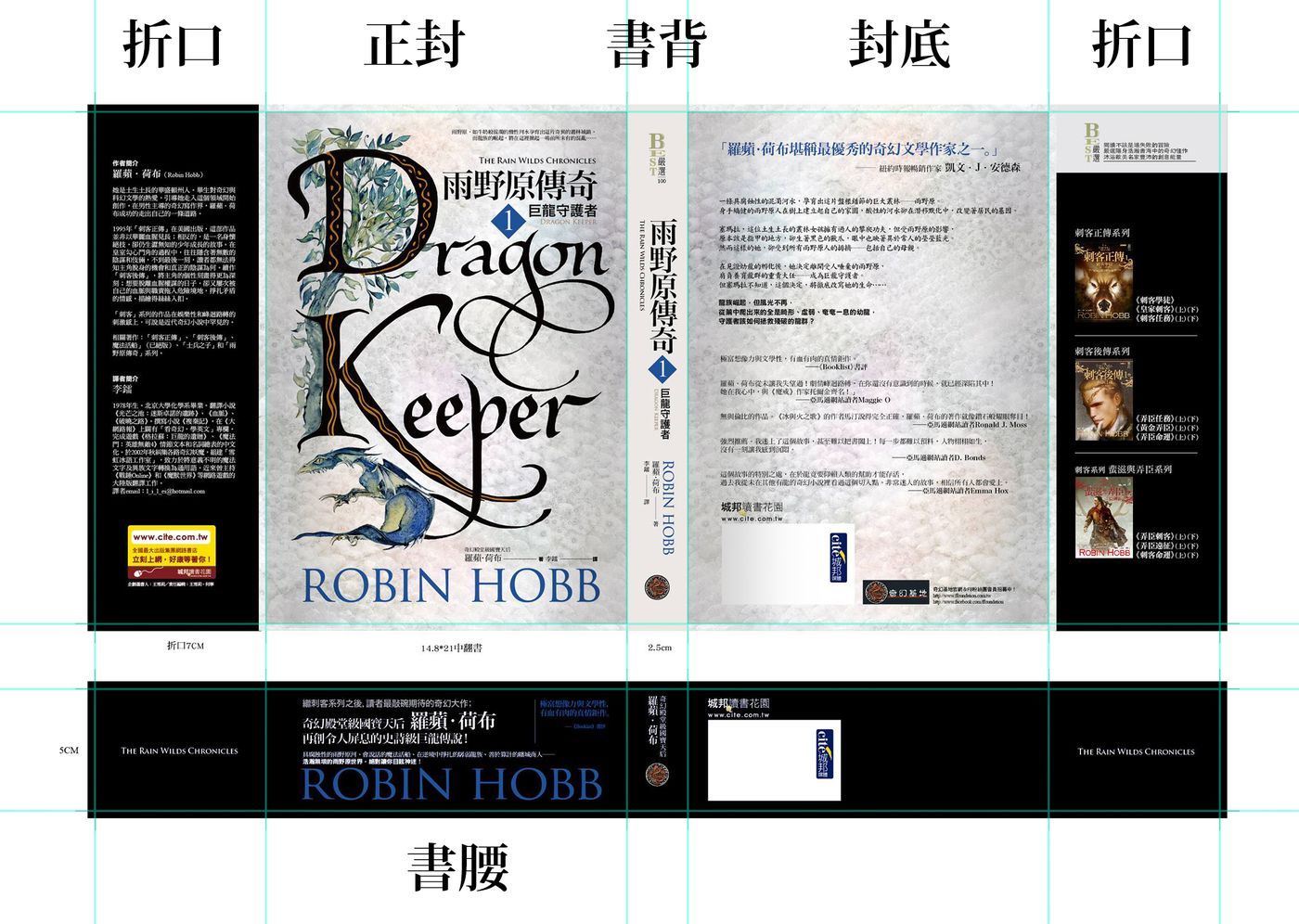
The design of the book's binding is the first hurdle to influence how the unfamiliar reader perceives the book. The design of the book title, the illustrations on the cover, the fonts for the copy, and the information on the waist, all of which constitute the reader's first impression of the book.
As for what content to put on each part of the book cover, although there are so-called "common" practices, it is not necessarily necessary to follow conventions and limit the design to this. In the past, publishers would disassemble book covers into separate units, deal with the front cover, back and back cover individually, and use a standard format to construct their own book cover image.
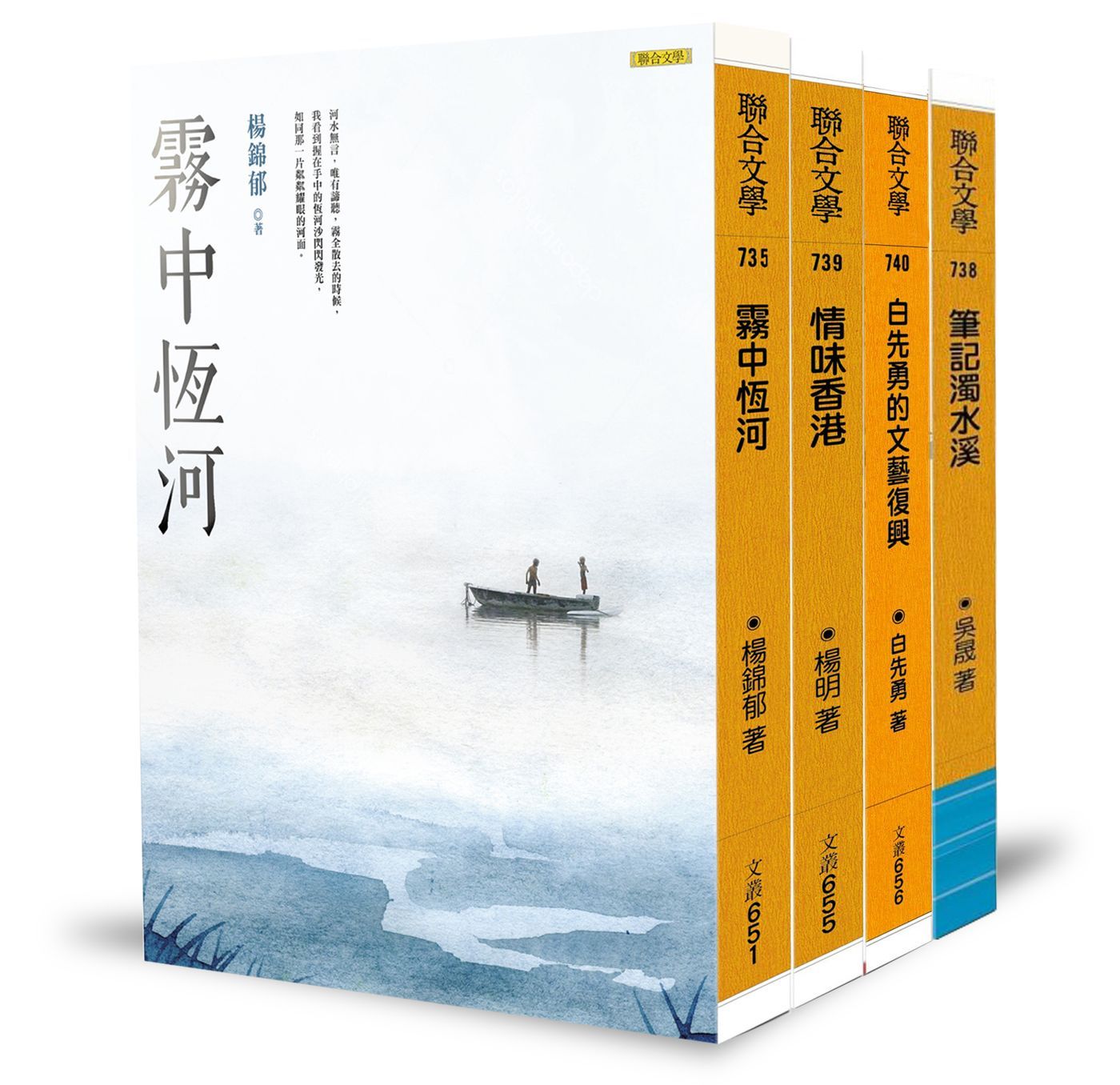
The backs of United Literature are representative enough. They have built a clear impression and recognition among readers for a long time. In the side-mounted bookshelf, they can speak in place of the publishing house itself. From a distance, it can be seen at a glance that this row is a union. Literary book.
However, the unified book back naturally dissolves the style of individual books, and cannot continue the design elements of the front cover. In today's book cover design, most designers regard the book cover as a whole, and the visual concept extends from the front cover to the back and back cover, not just three independent sides.
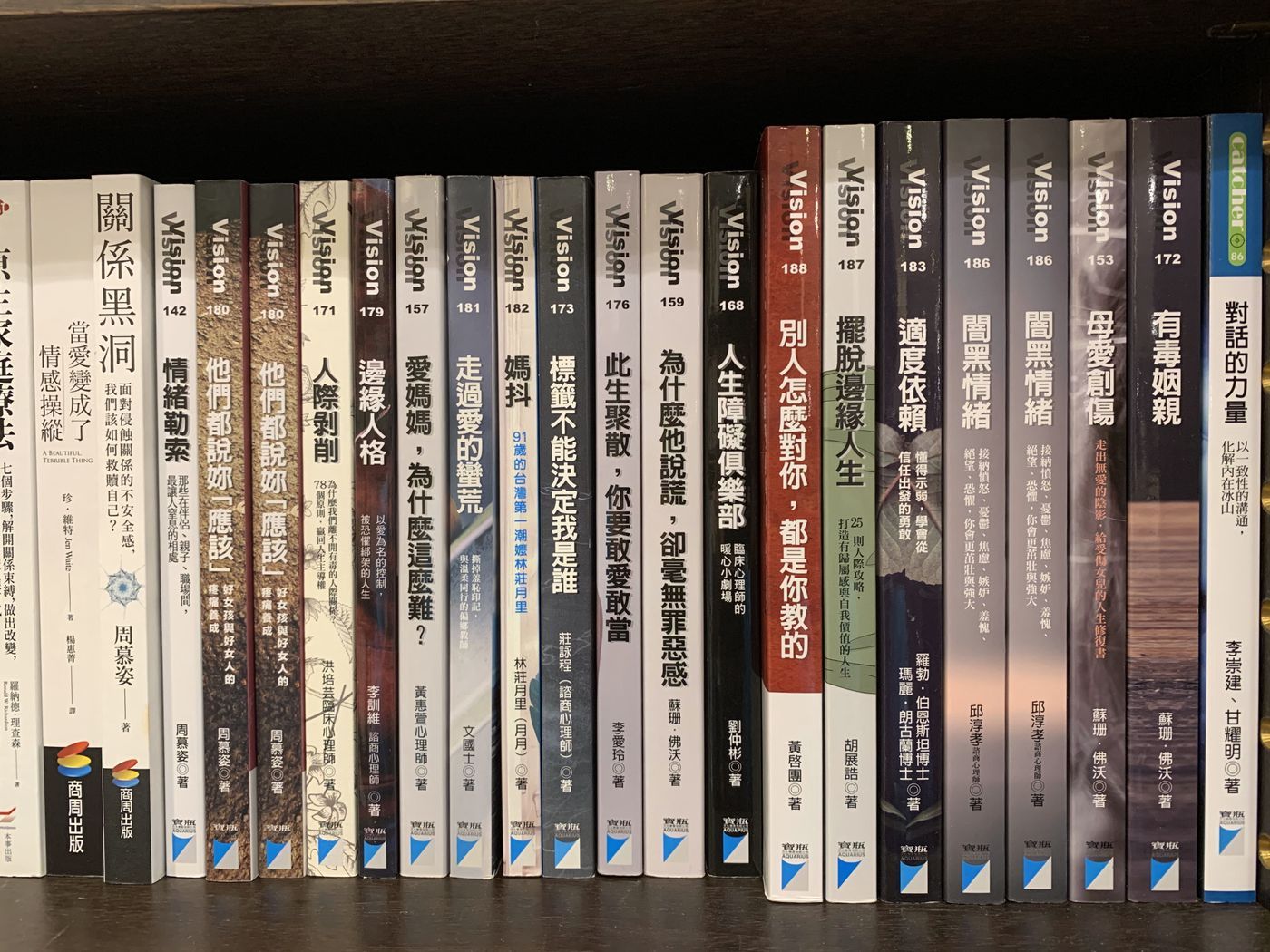
The current cover design will extend the design elements of the front cover to the back of the book, but will construct a consistent back vision through elements such as the book series, book title and publisher's logo.
The front cover , as the facade of the book, plays the role of attracting readers, implying the content of the book, and conveying the style and atmosphere. Putting aside the experimental approach for the moment, the book cover will most likely start with a catchy title , followed by a bright, unique imagery to create the atmosphere and style. The book cover is also the most important place to affect the "feel" of a paper book . In addition to graphic design, designers will use different post-processing to highlight the "texture" of the book, which is also the most difficult part of e-books to replace.

The back of the book is where the most important information of the book is placed. Sometimes the clutter of copywriting on the front cover interferes with each other and confuses readers. The limited space on the back of the book can put all the most necessary information to identify a book: book series, book title, author and publisher name . When a book is placed on the shelf, readers often have to rely on the information and impressions on the back of the book to retrieve it.

The back cover, if the front cover first grabs the reader's attention with vision, the back cover is where the real ability speaks. If it is a book that cannot be previewed, readers can only decide whether to buy the book through the copy, excerpts, testimonials and marketing copy on the back cover. The back cover is also where the barcode and price of the book are placed.
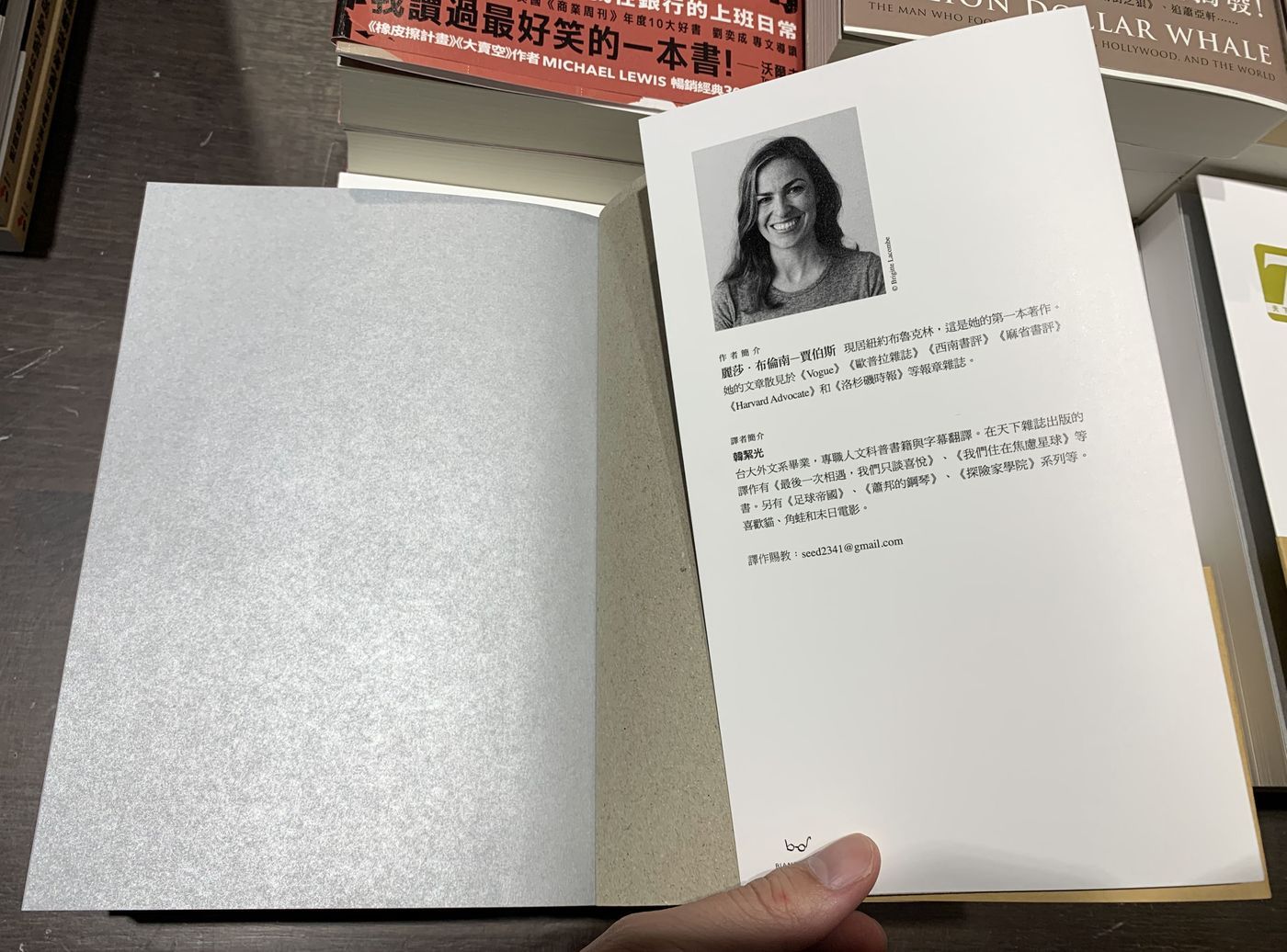
Folds are used on paperback book covers to thicken the cover, improve the stability of the book when it is upright, and prevent the cover from lifting outwards ; the book jacket and waist must have folds to cover the inner seal to avoid loosening.
The front fold is usually used to record author and translator information, and the back fold is used to supplement other information, such as other books, content highlights, recommended words, and so on.
Sometimes information such as cover design and responsible editor is placed at the bottom of the fold in a low-key manner.
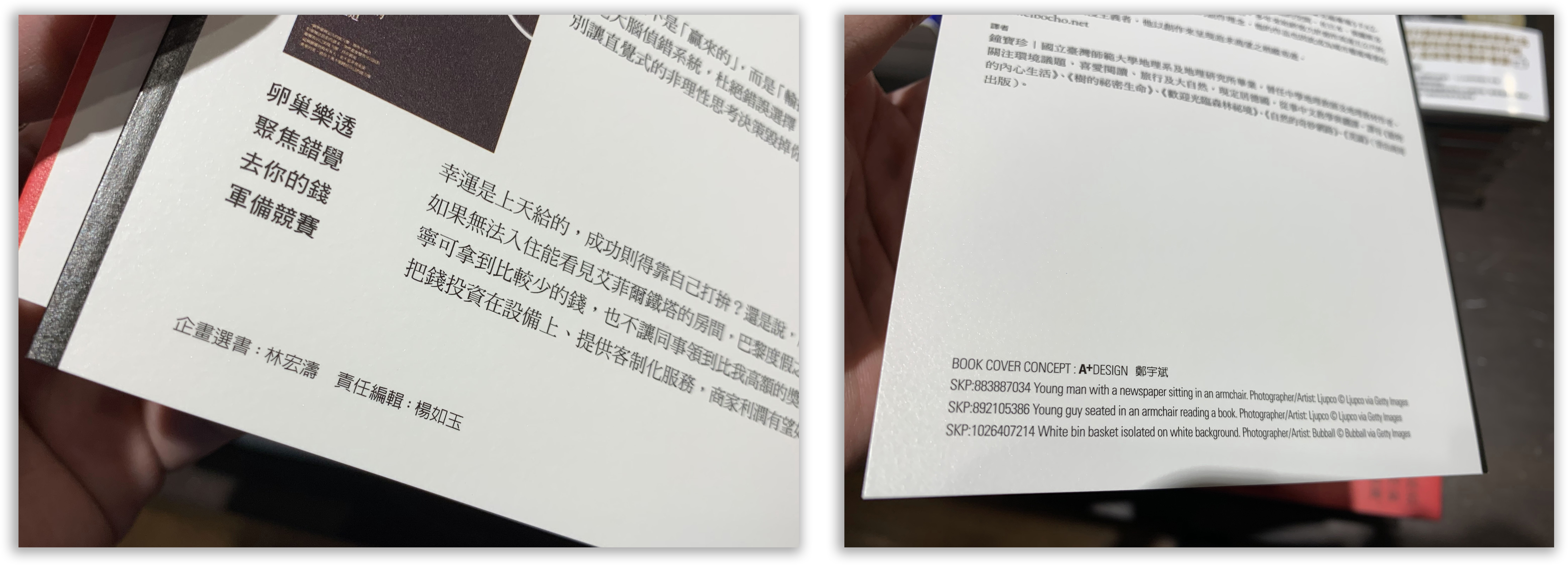

- Book waist : The belt that wraps around the lower edge of the book cover or book jacket is called the book waist.
Book waists are often criticized for being tasteless, a pity to discard, and dispensable book accessories, which are not only easy to be damaged, but if they lack ingenious design, they will not only hinder the beauty of the book cover, but may also be reduced to a slogan of advertising slogans. Taste.
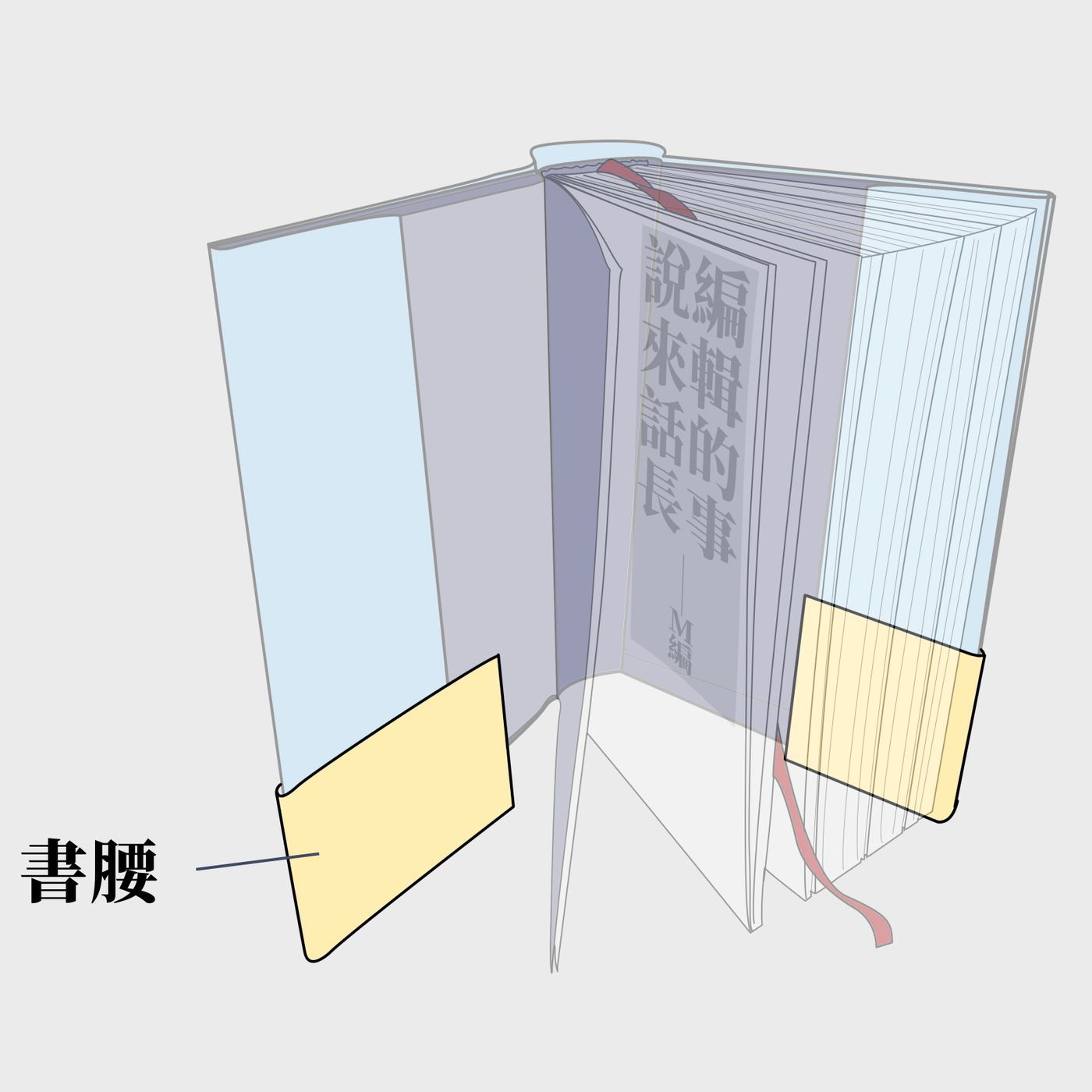
The biggest use of the waist is to avoid printing marketing copy directly on the cover, and it can be updated from time to time. I don't think the waist is not a part of the book, but I don't deny its dispensable nature after the reader buys it. The waist of the book is generally used to place more philistine and exaggerated information such as recommenders, testimonials, advertising copy, new book event information, and award-winning information. Since the waist of the book is usually printed on thinner paper, it is very easy to be damaged after being transported and picked up and placed by readers for several times. Some publishers that do not plan to print the waist will print the copy information directly on the lower edge of the cover. , forming a "fake book waist" style that looks like a book waist.
Another way is to print a larger book jacket and fold it back to form a book waist. Let the readers choose whether to keep the "with book waist" style, or fold the book waist back and restore it to a refreshing and elegant cover.
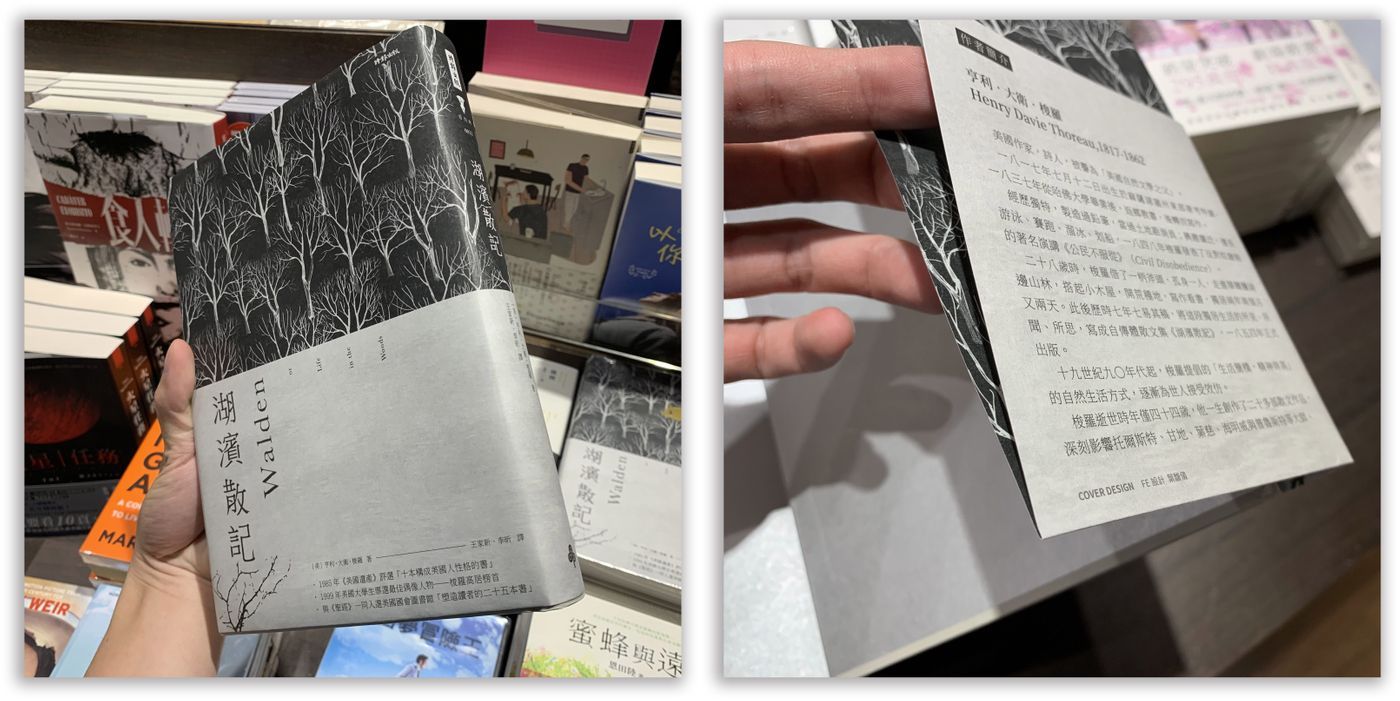
In the life cycle of a book, it does not take long for the use of the waist of the book to be displayed—the time it takes to put it on the bookstore platform , that is, within one to three months after the new book goes on sale. Niche or non-store-selling books are more likely to be unable to show people on the plane from the beginning of publication. The information on the waist of the book is naturally difficult to expose, and it only has the function of preventing the cover from adding bulky copywriting information.
For online bookstores, the function of the book waist is even weaker. Unless you're using punchy copy that grabs your attention in the cover thumbnail, most of this marketing copy can be listed directly in the information field of the web page. Whether or not to print the waist of the book, and how to place the marketing copy, is even more troublesome for small publishing houses with insufficient funds and difficulty in distribution. It is also a marketing work that editors must consider when thinking about how to frame a book.
There are many different aspects that affect the sales of a book, cover design is one part, but more depends on the theme, the author, and some current events surrounding factors. For example, in the book "Financial Freedom, Live the Life You Really Want Early" mentioned above, the waist of the book even covers the author's name on the cover, but "Financial Freedom" itself has become a topic of conversation and has become the pursuit of everyone nowadays. Target. For Taiwanese readers, it seems that it does not matter who wrote it, but whether it meets the needs of life and work is more important.

If the content hits the reader's needs, the author's own strength and popularity are both powerful. Even if the book cover is ugly, readers will still pay for it (at most, dislike a few sentences). However, how to attract potential readers and unfamiliar readers who show their reading needs for the first time often has to rely on "external" to impress. With the increasing concentration of Taiwan's reading population on a small group of people, coupled with the improvement of aesthetic literacy, the competition for binding design in the book market has become increasingly fierce, and more experimental binding methods have emerged. This is even more evident in released classics, where readers often make decisions based on the cover rather than the publisher when choosing which edition to buy.
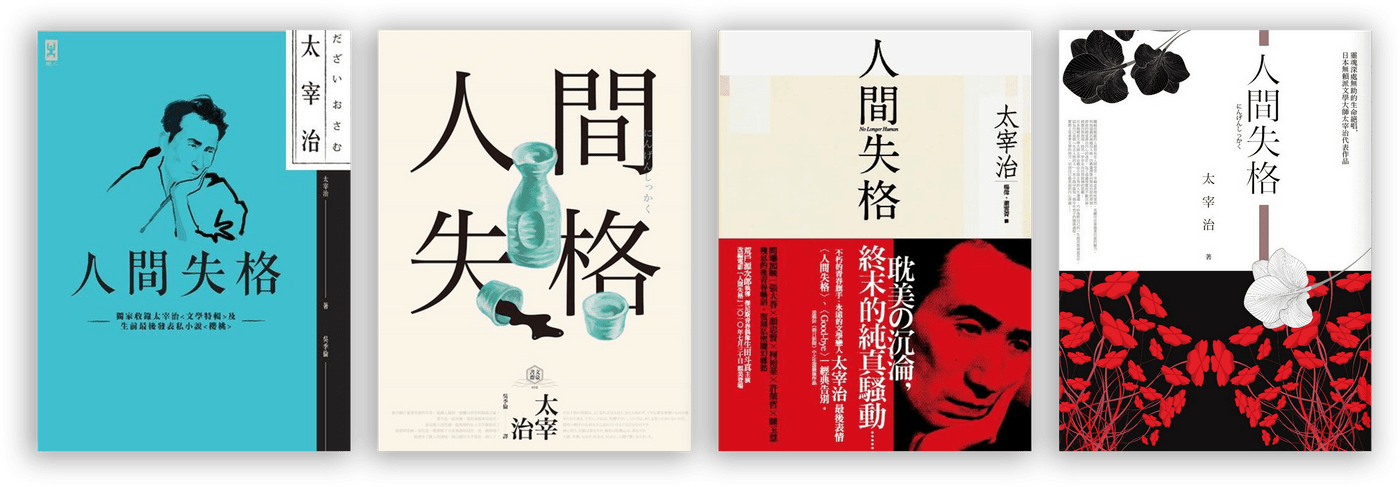
The cost of the binding design will be amortized with the amount of printing. The design aesthetics in line with the times is the easiest place for publishers and editors to use their efforts and intentions, apart from the author, and they must do their best to win the favor of readers.
The overall work of binding includes determining the binding method, the release version (the form of the book), the format, whether to add a book jacket, a book waist, and the copy content to be placed in each part of the book. At this stage of work, it is necessary to integrate the opinions of the editor and the marketing side, and integrate them into a specific work instruction. Since the design of book covers is now mostly entrusted to full-time designers, how to communicate with designers/art editors and convert the results of communication into specific works that meet market demands and authors' expectations depends on the executive/responsible editor translation and arrangement.
In the following pages, I will continue to explain how the binding design creates the "feel" of the paper book, that is, how to select paper, print and post-process, and how to arrange the inner pages.
This article is simultaneously published to the square grid
Like my work? Don't forget to support and clap, let me know that you are with me on the road of creation. Keep this enthusiasm together!

- Author
- More